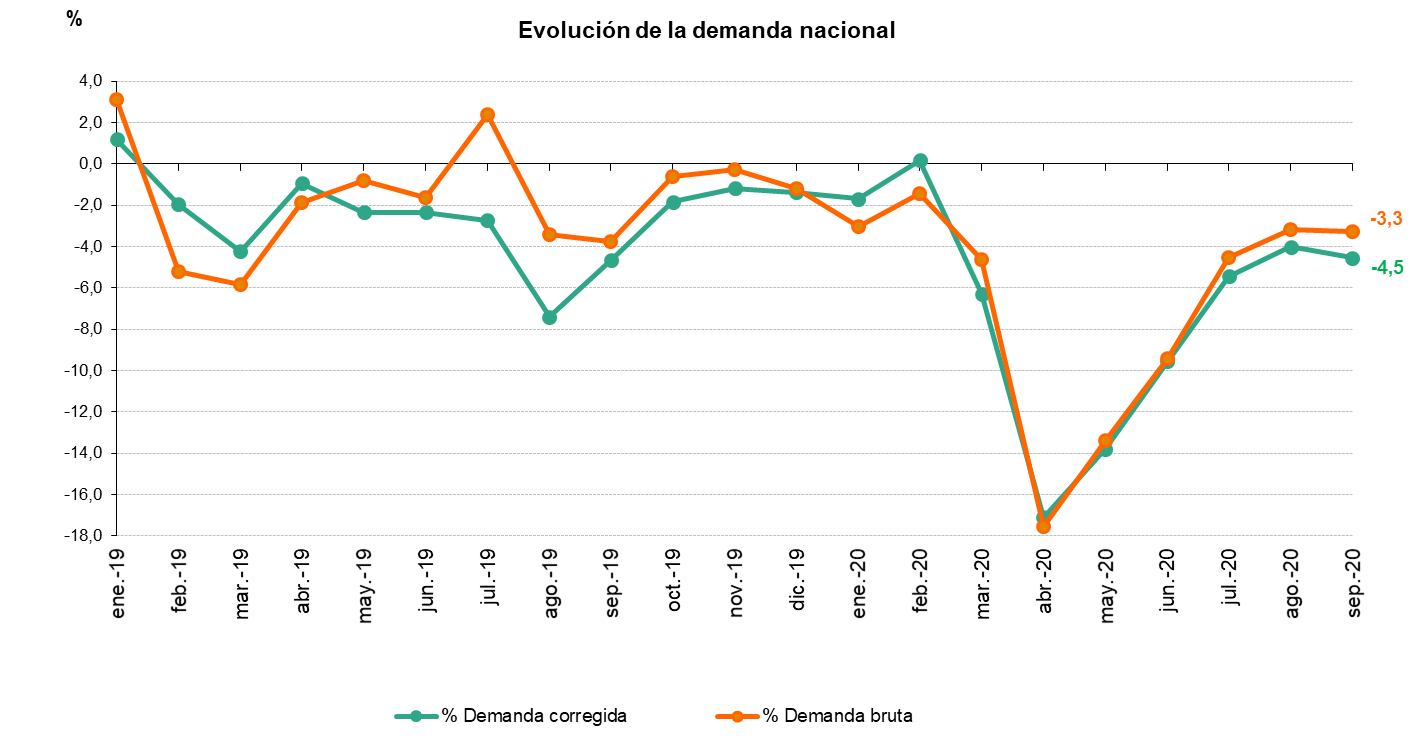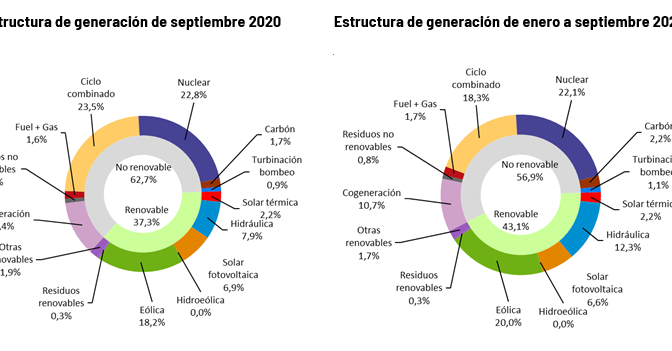Wind energy generated 18.2% of electricity in September, solar thermal 2.2% and photovoltaic 6.9%.

National electricity demand for September is estimated at 20,598 GWh, 3.3% lower than that registered in the same month of the previous year. If the effects of the calendar and temperatures are taken into account, the figure drops 4.5% compared to September 2019.

In the first nine months of 2020, the demand is estimated at 186,048 GWh, 6.6% less than in 2019. In this case, once the influence of the calendar and temperatures has been corrected, the demand is 6.9% lower than that registered in the same period of the previous year.
In the month of September, and according to data estimated to date, generation from renewable energy sources represented 37.3% of production. So far this year, renewables produced 16.3% more than in the same period of 2019. Thus, from January to September 2020, renewable generation reached a share of 43.1% of the national total.
In September, 61% of electricity production came from technologies that do not emit CO2 equivalent.
With the information available today, the generation of wind power in September reached 3,894 GWh, a figure similar to that of the same period last year, and accounted for 18.2% of national production, ranking as the third technology in the mix generation after the combined cycle (23.5%) and nuclear (22.8%).
For its part, solar photovoltaic generated 1,476 GWh in September, 71.6% more than in the same month of 2019, and its contribution to the generation structure was 6.9% of the total.
Hydraulic production, which was 37.8% higher than that of September last year, registered 1,688 GWh, and accounted for 7.9% of the generation structure.
The demand for electricity falls by 2.4% in the peninsular electricity system
In the peninsular electricity system, demand in September is estimated at 19,459 GWh, 2.4% lower than that registered in the same month of the previous year. If the effects of the calendar and temperatures are taken into account, the demand is 3.7% lower than that of September 2019.
In the first nine months of 2020, the demand for electricity in the Peninsula is estimated at 175,998 GWh, 6.1% less than in 2019. In this case, once the influence of the calendar and temperatures has been corrected, the demand it is also 6.4% lower than that registered in the same period of the previous year.
During this month and according to data estimated to date, 38.5% of peninsular generation was of renewable origin and 63.4% came from technologies that do not emit CO2 equivalent. For its part, wind power registered 3,798 GWh, 0.1% higher than that of September last year, and contributed 18.6% to the mix.
The demand for electricity fell by 29.2% in the Balearic Islands and 7.3% in the Canary Islands in September
In the Balearic Islands, the demand for electric power in September is estimated at 405,525 MWh, 29.2% lower than that registered in the same month of the previous year. If the effects of the calendar and temperatures are taken into account, the figure drops 28.5% compared to September 2019. In the first nine months of 2020, Balearic demand is estimated at 3,774,166 MWh, a 21, 2% less than in the same period of 2019.
The combined cycle, with 48.2% of the total, was the first source of electricity generation in the Balearic Islands in September, the month in which the renewable energies generated in the archipelago and that do not emit CO2 equivalent represented 8.6%.
On the other hand, in the Canary archipelago the demand for electricity is estimated at 697,470 MWh, 7.3% lower than that registered in the same month of the previous year. If the effects of the calendar and temperatures are taken into account, the figure drops 8.2% compared to September 2019. In the first nine months of 2020, the Canarian electricity demand is estimated 5,965,914 MWh, a 9, 9% lower than the same period in 2019.
In September, the combined cycle, with 43.8% of the total, was the main source of electricity generation in the Canary Islands. Renewables and emission-free technologies accounted for 17.2% of production.


